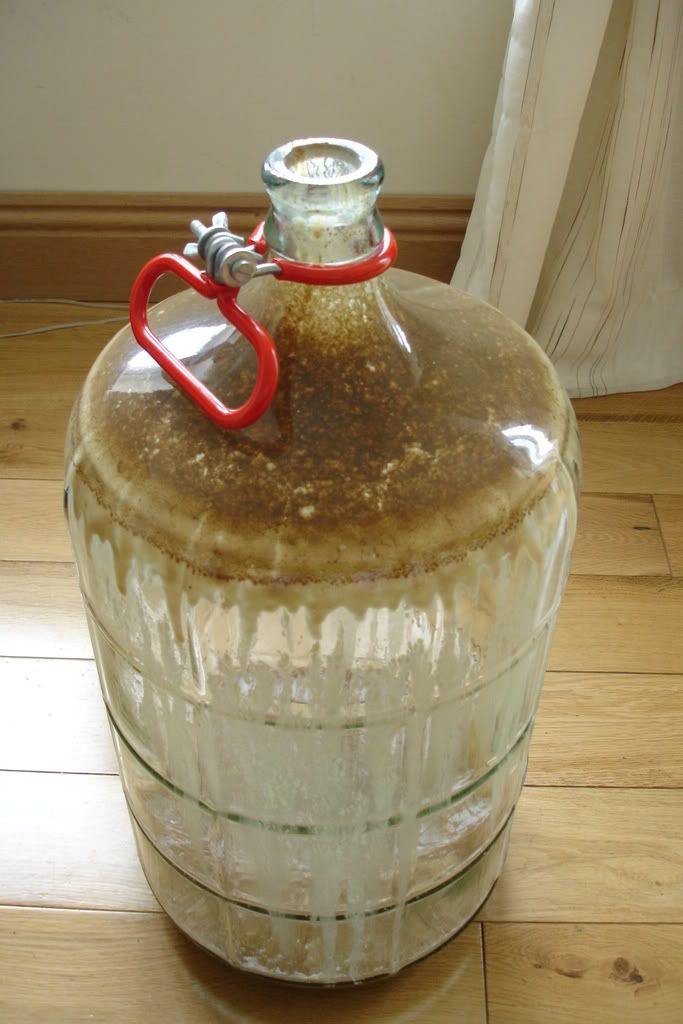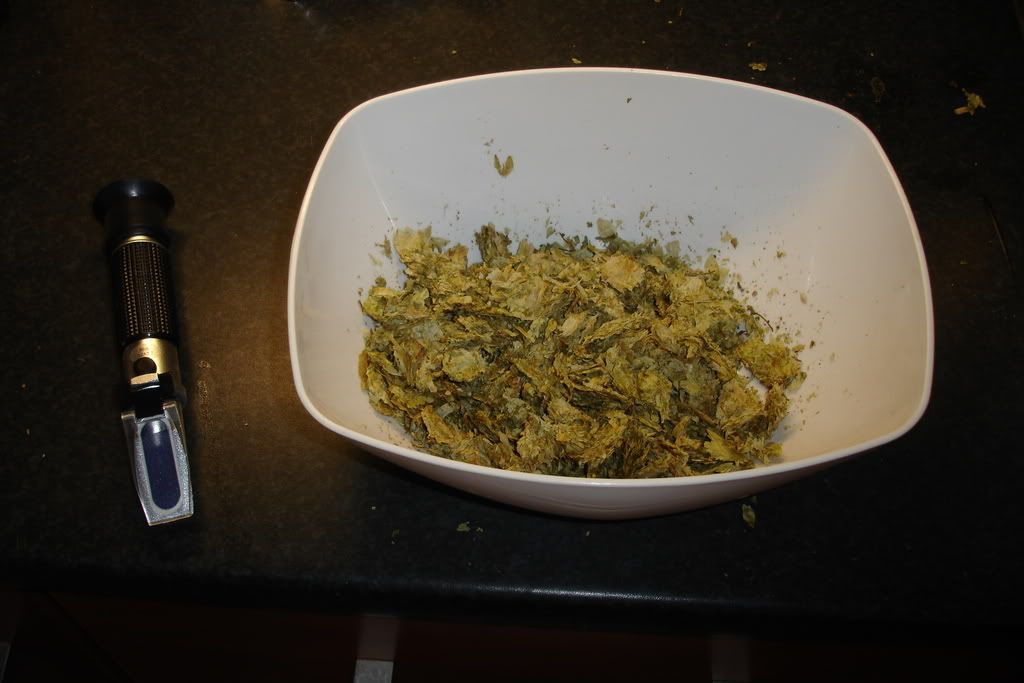 I broke out the mash tun again last week. I was keen to do so after the disaster of my last two batches. As a result of those mishaps I haven't had any success in the brew house since my very tasty Industrial Stout and wouldn't generally brew another dark beer quite so soon, but my recent Sierra Nevada Stout encounter tipped the balance and edged me to brew another porter. I have a theory that a great deal of the American dark beer I drink has a fair measure of Vienna or Munich malts which contribute to the rich fullness that is the most striking aspect of these beers. The porter I put together is something of a hybrid because I love English porter, the best of which is often typified with a brown malt contribution, while American porters and stouts are hopped a little more and use richer malts. When formulating the recipe I opted for equal measures of brown and Munich malt but in the end opted to half the brown malt contribution to make it a little more American, but then at the last moment threw in a handful of East Kent Goldings to the boil, which makes it more American, I suppose, but the hops are English. In the end it really doesn't matter. All I'm looking for is a full flavoured porter which I think I might have achieved, judging by the sneaky taste I had while transferring it to secondary fermentation. The unappealing gunk in the carboy above is the stuff left after primary fermentation. Brewing is a messy business with lots of funky stuff produced, but the finished product is usually good, hard as it may be to believe from the above picture.
I broke out the mash tun again last week. I was keen to do so after the disaster of my last two batches. As a result of those mishaps I haven't had any success in the brew house since my very tasty Industrial Stout and wouldn't generally brew another dark beer quite so soon, but my recent Sierra Nevada Stout encounter tipped the balance and edged me to brew another porter. I have a theory that a great deal of the American dark beer I drink has a fair measure of Vienna or Munich malts which contribute to the rich fullness that is the most striking aspect of these beers. The porter I put together is something of a hybrid because I love English porter, the best of which is often typified with a brown malt contribution, while American porters and stouts are hopped a little more and use richer malts. When formulating the recipe I opted for equal measures of brown and Munich malt but in the end opted to half the brown malt contribution to make it a little more American, but then at the last moment threw in a handful of East Kent Goldings to the boil, which makes it more American, I suppose, but the hops are English. In the end it really doesn't matter. All I'm looking for is a full flavoured porter which I think I might have achieved, judging by the sneaky taste I had while transferring it to secondary fermentation. The unappealing gunk in the carboy above is the stuff left after primary fermentation. Brewing is a messy business with lots of funky stuff produced, but the finished product is usually good, hard as it may be to believe from the above picture.It's really very easy to over think beer recipes, when in fact the simplest concoctions will produce excellent results providing the other aspects of the process are looked after, in particular the fermentation. Most home brewers do not give enough regard to their yeast, which is a pity because they often put a great deal of time and thought into sourcing the ingredients and blending them is such a manner as to produce the beer they long for. In general, home brewers under pitch their yeast because they cannot produce sufficient cell mass in the average starter,while at the ot
 her end of the scale some massively over pitch by racking their most recent brew onto the yeast cake of a previous one. Neither of these are conducive to nice flavours in the beer, but we often have no choice but to work within the restrictive environment of our kitchens and garden sheds. This latest brew was my first attempt at pitching a specific amount of cells per millilitre of wort, but counting the cells proved more difficult than I thought, mainly because I allowed the yeast to sediment and it produced a very firm slurry which couldn't be readily re-dispersed into solution. This of course ruined any chance of counting the yeast in the starter because it was no longer homogeneous. I am determined to persevere with is because pitching the correct amount of yeast is fundamental to good beer production, and I plan to figure out how to do it.
her end of the scale some massively over pitch by racking their most recent brew onto the yeast cake of a previous one. Neither of these are conducive to nice flavours in the beer, but we often have no choice but to work within the restrictive environment of our kitchens and garden sheds. This latest brew was my first attempt at pitching a specific amount of cells per millilitre of wort, but counting the cells proved more difficult than I thought, mainly because I allowed the yeast to sediment and it produced a very firm slurry which couldn't be readily re-dispersed into solution. This of course ruined any chance of counting the yeast in the starter because it was no longer homogeneous. I am determined to persevere with is because pitching the correct amount of yeast is fundamental to good beer production, and I plan to figure out how to do it.
1 comment:
Thom
Munich works great in porter/stouts well worth a try,
Post a Comment